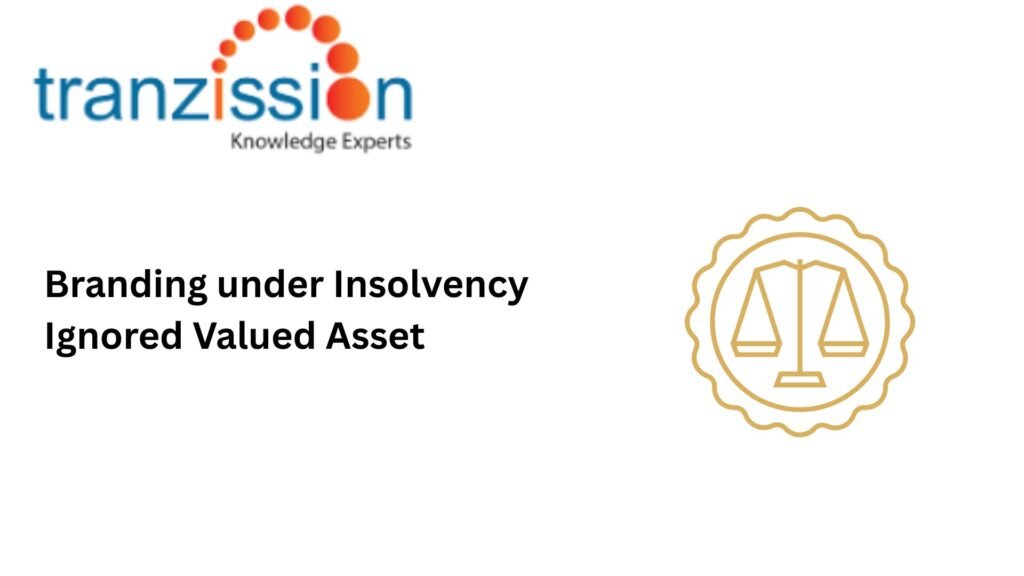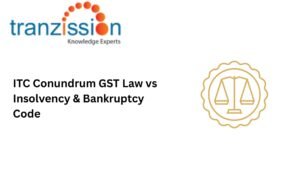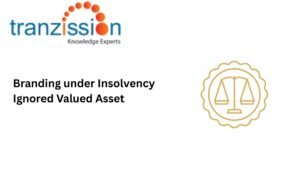
Branding under Insolvency Ignored Valued Asset

Table of Contents
Under the Insolvency and Bankruptcy Code, 2016 (“the IBC”), a brand’s value is considered an intangible asset and is concluded in the calculation of a company’s assets during insolvency resolution. However, Branding under Insolvency is frequently overlooked due to the difficulty in accurately valuing it as an intangible asset and the lack of standardized accounting practices for brand value. Additionally, the focus in insolvency often shifts to tangible assets, and the legal complexities surrounding intellectual property rights can further complicate matters.
What Does ‘Branding’ Include in Legal and Commercial Terms?
These elements of Branding under Insolvency contribute to the overall goodwill of the business, which is a key factor in determining the company’s worth, and includes:
- Goodwill: Goodwill represents the intangible value of a business beyond its physical assets, including reputation, customer loyalty, and brand recognition that a company has established
- Trademarks: These are legally protected symbols, designs, or phrases that identify and differentiate a company’s products or services.
- Copyrighted logos, slogans
- Customer perception: Customer trust along with digital presence, is earned through positive interactions and experiences with a brand and is a key driver of repeat business and positive word-of-mouth, significantly impacts the company’s value.
A strong brand, with its associated reputation, trademarks, customer trust, and goodwill, is a valuable asset that can significantly impact the outcome of an IBC process, specifically:
- Differentiation in market
- Brand equity and premium pricing
- Loyalty and customer retention
Branding as an Intangible Asset under IBC
During an insolvency process, intangible assets, branding, are evaluated to assess the viability of the business and to determine the potential recovery for creditors. They are treated as part of the corporate debtor’s assets and are included in the liquidation estate, unless specifically excluded. Section 18 of the IBC lists the duties of the interim resolution professional (IRP), including taking control and custody of all assets. Further, in section 36 the definition of liquidation estate is given and specifies what assets are included, specifically under section 36(3), like intellectual property, securities, and contractual rights. The insolvency professional plays a crucial role in identifying, valuing, and preserving the branding of a corporate debtor. This involves managing the corporate debtor as a going concern, protecting its assets, and working with stakeholders to manage value for creditors. To ensure compliance with the IBC provisions and streamline managing the corporate insolvency resolution process (CIRP) for insolvency professionals, it is necessary to address the lack of clear guidelines or standard methods to value branding under CIRP.
Why Branding Often Gets Ignored During Insolvency Proceedings
The reason for Branding under Insolvency being overlooked during CIRP is due to several factors, such as”
- Insolvency proceedings prioritize the liquidation of physical assets, like property, equipment, inventory, to satisfy creditors. This is a more straightforward and quantifiable process compared to valuing and selling a brand, and does not uphold the time-sensitive essence of the CIRP.
- Brand value is often subjective and difficult to assess accurately, and it is not always clear how much of a company’s value is attributable to its brand, especially when compared to tangible assets.
- Insolvency professionals may not have the expertise to property value and manage intangible assets like brand reputation. This can lead to a preference for focusing on more familiar tangible asset management.
Case Studies Where Branding Played a Role in Insolvency Resolution
The strong brand value of Jet Airways, influenced the interest in its resolution plan, during its insolvency proceedings. The airline’s brand recognition and reputation attracted multiple resolution applications, urging that they might emerge from the resolution process successful. However, the resolution plans submitted failed, and Jet Airways was ordered into liquidation. In the Kingfisher Airlines case, despite its strong brand and luxurious image, ultimately failed due to a combination of factors including massive debt accumulation, financial mismanagement, and legal issues. It had accumulated a debt of Rs. 9,000 crore, primarily from a consortium of 17 banks, and its rapid expansion, including international routes, was not matched by sufficient revenue generation, and the airline struggled to adapt to the competitive Indian aviation market, leading to its downfall.read more Section 34 of Arbitration Act
Legal & Strategic Implications
Branding under Insolvency requires a careful balance between preserving brand value and managing the reputational impact of insolvency, and has significant implications:
- Conducting a thorough IP audit is essential to identify and assess all of the company’s assets, including brands, in resolution plans. Essentially brands can be strategic assets in resolution plans. Having a strong brand can significantly increase a company’s value, making it more attractive to potential resolution applicants.
- Brands can be licensed or assigned to bidders for a specific period, which allows them to use the name, logo, and other assets in exchange for royalty payments.
- Registered trademarks and maintaining IP rights provide legal protection against unauthorized use or infringement, thus preventing competitors from exploiting a company’s brand reputation, particularly during insolvency.
- Registered valuers, particularly those specializing in financial assets, can provide expert evaluation of brand assets, considering factors like market position, customer loyalty, and future revenue potential.
Branding under Insolvency International Perspective
In both the United States Bankruptcy Code and the United Kingdom Insolvency Act, Branding under Insolvency is a valuable asset that can be crucial for a company’s survival during insolvency. While both jurisdictions prioritize creditor interests, they have different approaches to how branding is handled during restructuring or liquidating. Chapter 11 of the US Bankruptcy Code focuses on reorganisation, where the debtor often retains control and can leverage its brand to attract investors and customers. The UK system, while offering various procedures like administration and company voluntary arrangements, emphasizes maximizing creditor returns, which may involve selling off assets, including the brand. India can learn from both of these frameworks on the need to clarify the treatment of intellectual property under the IBC, and focusing on monetization of goodwill and brand licensing.
Recommendations to Strengthen Brand Recognition in IBC
To enhance brand recognition within the IBC, it is recommended:
- For the Insolvency and Bankruptcy Board of India (IBBI) to establish training programmes for insolvency professionals to identify brand assets.
- For the IBBI to introduce guidelines on intangible asset valuation.
- To encourage inclusion of brand licensing or co-branding options in resolution plans.
- To promote collaboration with brand or valuation experts and ensure the accurate valuation of such intangible assets.
Conclusion
Branding under Insolvency, despite being intangible, has substantial economic and strategic worth. Ignoring it during insolvency can significantly diminish an enterprise’s value, resulting in lowering recovery for creditors involved in the insolvency process. Incorporating brand valuation in the insolvency process positively impacts the overall process and can benefit stakeholders. By recognising the brand’s value, potential buyers may be willing to pay a higher price, increasing the funds available for creditors and attracting new investors interested in continuing the business. It can also make the resolution process more efficient, as it may be easier to find a buyer who is interested in acquiring the business as a going concern rather than just its assets, and revive viable businesses more effectively.
FAQs
-
Is branding considered an asset under the Insolvency and Bankruptcy Code?
Yes, branding such as trademarks, goodwill, and reputation, are included as intangible assets of the corporate debtor under the IBC.
-
Can a brand be sold or licensed during insolvency?
Yes, a brand, often represented by a trademark, can be sold or licensed during insolvency.
-
Who can value branding during insolvency proceedings?
The IBC mandates the appointment of registered valuers to ensure professionals and standardization valuation practices, who also are authorized to value assets, including branding.





